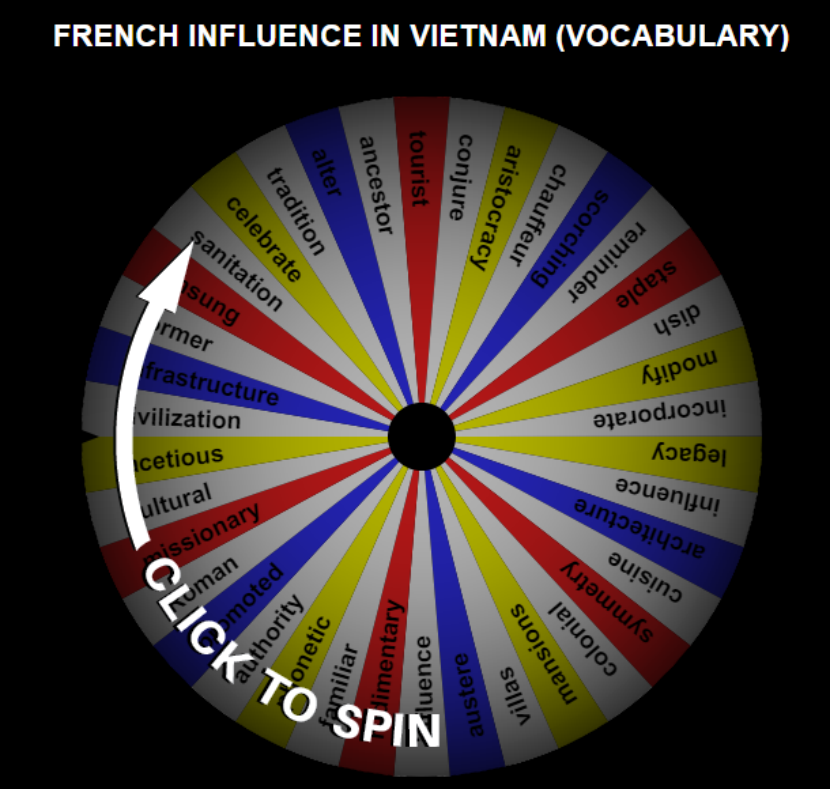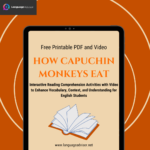The French influence in Vietnam. Interactive Reading Comprehension Activities with Video to Enhance Vocabulary, Context, and Understanding for English Students. Free Printable PDF
The French influence in Vietnam

Improving reading comprehension is a vital skill for English learners at all levels. It goes beyond just understanding the words on the page, but also involves grasping meaning, context, and intent behind a text. One effective way to enhance reading comprehension is by integrating videos alongside written exercises. Video content can provide visual cues, context, and engagement that help reinforce the learning process. In this blog post, we’ll explore a fun and interactive reading comprehension activity that combines written passages with video resources to deepen understanding and make learning more enjoyable.

The French influence in Vietnam – Reading Comprehension
Watch the video here:
Hi, I’m Steve and I’ve been living in Hanoi for the past two years. I’ve become fascinated by thelegacy and influences left by the French following their ruling of Vietnam from 1887 until
From the architecture through to the cuisine the results are all around us, I’d like to guide you through Hanoi to view some of these legacies
Architecture
In certain cities—most notably Dalat, Ho Chi Minh City (Saigon) and Hanoi—there are still wonderful examples of French architecture, with their high arches, balconies, columns and pleasing symmetries. Some of the more remarkable buildings are the Hanoi Opera House, the Notre-Dame Cathedral Basilica of Saigon and the many colonial villas and mansions in the hills surrounding Dalat. Even today, rich Vietnamese still build villas with French architectural features, whereas government buildings tend to be more austere.
Linguistics
While China has undoubtedly had more influence over the Vietnamese language, anyone with even a rudimentary knowledge of French will hear familiar words in Vietnam. The words for cheese, neckties, butter, bread, father (pa), beer and many, many others are all phonetic copies of French words.
Besides sharing words, Vietnamese as you see it today only looks the way it does because French colonial authorities promoted the Romanized version created by Alexandre De Rhodes, a Jesuit missionary who also helped to bring about the next major cultural influence.
The colonial French—behind their facetious notion of spreading civilization to their colonies—did leave behind modern infrastructure which Vietnam still uses to this day. The famous Reunification Express, -the railway line between Hanoi and Ho Chi Minh City- was originally built under French rule. Many of the roads and bridges in Vietnam were also first built under French supervision. Probably the most famous example is the Long Biên Bridge in Hanoi, formerly the Paul Doumer Bridge.
One unsung hero of French infrastructure is the sanitation system they left behind, especially in Ho Chi Minh City. Without French infrastructure, this city of almost ten million would’ve been much smellier.
Religion
Catholics in Vietnam make approximately 7% of the population. Holidays like Easter and Christmas or not nearly as widely celebrated as they are in the West, have their own Vietnamese traditions. It’s common to see people wearing a cross around their neck, and many families have an alter to Jesus in their home, near their ancestor shrine.
Vietnam is officially atheist, but the government doesn’t interfere with people practice in their faith these days. Also, some of the most famous buildings in Vietnam are churches.
Cyclos
Long since replaced by bicycles and motorbikes, you can still find these holdouts of the French colonial days in the touristy areas around the country, near the Citadel in Hue, District 1 in Ho Chi Minh City and in Hanoi’s Old Quarter.
They conjure images of French aristocracy chauffeured around Saigon, fanning themselves under the scorching midday sun. They’re a strange reminder of a different era.
Cuisine
Many staple foods in Vietnam are French dishes modified to include local ingredients:
omelets, baguettes, croissants and anything fried in butter.
Certain ingredients—cauliflower, zucchini, pate and potatoes, among others—were introduced to Vietnam during the colonial years.Some dishes arose from the demands of French authorities and their families, while others came from Vietnamese cooks, incorporating their new ingredients. Much of what we know as distinctly Vietnamese cuisine has French influences.

Spin the wheel!

https://wheeldecide.com/index.php?id=515979

Using video in reading comprehension activities not only enhances students’ engagement but also aids in building critical language skills such as listening, vocabulary development, and contextual understanding. By incorporating multimedia into traditional reading lessons, teachers can cater to various learning styles and keep students motivated. We encourage you to try out this method and observe how it transforms reading into a more dynamic, interactive experience for your English learners.

DOWNLOAD THE PDF FOR FREE






